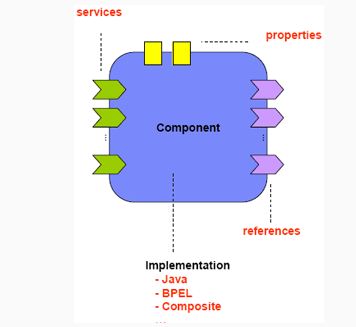https://ibmwebsphereintegrationdesigner.blogspot.com/2017/04/understanding-service-component-architecture.html
Service-component architecture is a collection
of rules, terms and conditions proposed for the development of applications base
on service-oriented architecture (SOA), which defines how computing entities work
together to carry out work for each other. SCA make simpler the designing and
integration of business applications that are built using an SOA by making separate
the business logic from its implementation so that the programmer can focus on
assembling an integrated application without bothering about particulars of its
implementation. SCA is based on the concept that all the tasks in an enterprise
should exist in the outline of services that are joined into composite to
address specific business necessities.
SCA brings together different technologies, programming languages,
frameworks and platforms for Web service
components and for the techniques used to connect them. SCA can be broken down
into four major divisions or models.
- The assembly model, This defines how
components are brought together, connected and packaged as services autonomous
of the programming language.
- The implementation model, This defines how
services are packaged and accessed for specific programming languages.
- The policy model, this defines service
policies autonomous of the programming code.
- The bindings model, this defines how
components are contacted independent of
the programming code.
When properly executed, SCA can assist
an organization to reduce the workload on its developers, shorten learning
curves, make possible reuse of services and update policies without having to alter
the programming. SCA also aid control over access methods and the
implementation of security-related countermeasures.







